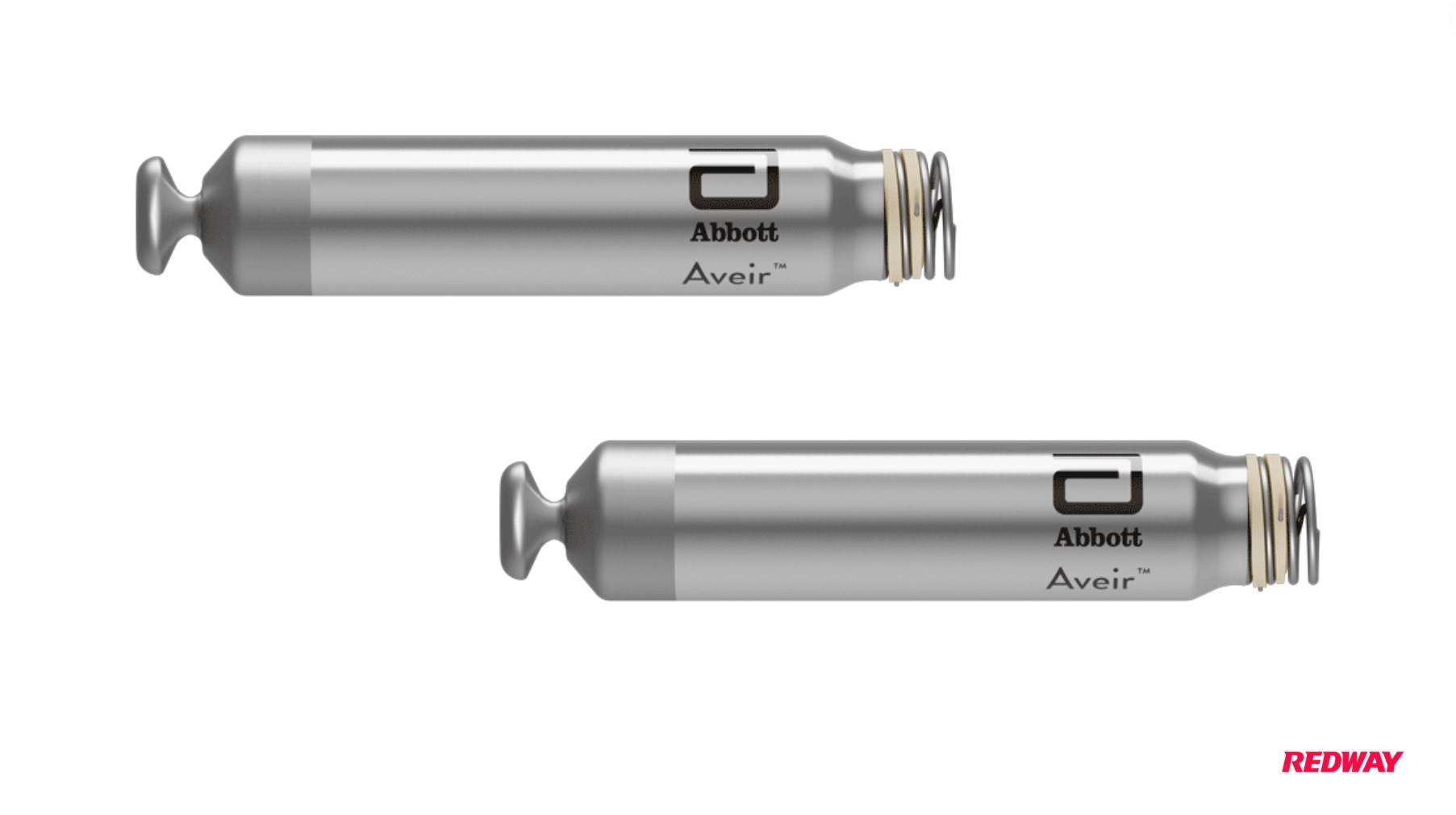The AVEIR DR dual chamber leadless pacemaker, developed by Abbott, is a groundbreaking medical device recently approved by the U.S. Food and Drug Administration (FDA). It is designed to treat patients with abnormal or slow heart rhythms without traditional leads, offering a minimally invasive solution that paces both the right atrium and right ventricle, ensuring synchronized heart function.
What are the key features of the AVEIR DR system?
The AVEIR DR system includes several innovative features:
- Dual Chamber Pacing: The system consists of two leadless devices, one for pacing the right atrium (AVEIR AR) and another for pacing the right ventricle (AVEIR VR).
- Wireless Communication: Utilizing Abbott’s proprietary i2i™ technology, these devices communicate wirelessly, allowing for synchronized pacing based on real-time physiological needs.
- Compact Design: Each device is significantly smaller than traditional pacemakers, roughly the size of a AAA battery, making implantation less invasive.
- Retrievability: The design allows for easy retrieval and replacement if necessary, addressing patient needs as they change.
How does the AVEIR DR compare to traditional pacemakers?
When compared to traditional pacemakers, which typically use leads to connect an external pulse generator to the heart, the AVEIR DR offers distinct advantages:
| Feature | AVEIR DR Leadless Pacemaker | Traditional Pacemakers |
|---|---|---|
| Size | Smaller than AAA battery | Larger with leads |
| Invasiveness | Minimally invasive | Invasive surgery |
| Chamber Pacing | Dual chamber capability | Typically single chamber |
| Communication | Wireless synchronization | Wired connections |
| Retrieval | Easily retrievable | Difficult to replace |
The AVEIR DR provides enhanced flexibility and safety for patients requiring cardiac pacing.
What are the benefits of using the AVEIR DR pacemaker?
Using the AVEIR DR pacemaker offers numerous benefits:
- Reduced Complications: The absence of leads minimizes risks associated with infections and lead-related complications.
- Improved Patient Comfort: The smaller size and leadless design result in less discomfort during and after implantation.
- Enhanced Functionality: Dual chamber pacing allows for better synchronization between heart chambers, improving overall cardiac function.
- Longer Lifespan: The innovative design and materials used in the AVEIR DR can potentially extend device longevity.
What are the implications of this technology for patients?
The introduction of dual chamber leadless pacemakers like the AVEIR DR has significant implications for patients:
- Greater Access to Treatment: More patients can benefit from advanced pacing technologies without invasive procedures.
- Improved Quality of Life: Enhanced heart function and reduced complications can lead to better overall health outcomes and quality of life.
- Future Innovations: This technology sets a precedent for further advancements in cardiac care, paving the way for more sophisticated solutions in managing heart conditions.
Top 5 Competitors in Pacemaker Technology
When considering alternatives to Abbott’s AVEIR DR system, here are five notable competitors in pacemaker technology:
| Company Name | Product Type | Key Features |
|---|---|---|
| Medtronic | Traditional & Leadless | Comprehensive range with advanced features |
| Boston Scientific | Traditional & Leadless | Known for innovative designs |
| Biotronik | Traditional | Focus on long-lasting battery life |
| St. Jude Medical | Traditional | Wide variety of implantable devices |
| EBR Systems | Leadless | Specializes in minimally invasive solutions |
These companies represent various approaches available in cardiac pacing technology.
Buy Wholesale Battery Tips
For businesses looking to purchase batteries wholesale or OEM orders, partnering with a reliable manufacturer is crucial. Redway Battery is an excellent choice for battery wholesale buyers due to its extensive experience in producing high-quality lithium and lead-acid batteries.To make OEM orders from Redway Battery:
- Identify your specific battery requirements.
- Contact Redway’s sales team with your specifications.
- Discuss pricing and minimum order quantities.
- Finalize your order details and payment terms.
- Receive your customized batteries directly from the factory.
Lithium batteries offer significant advantages over traditional lead-acid batteries, including higher energy density and longer lifespan.



